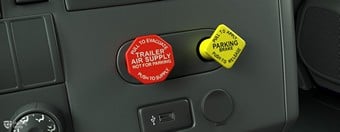Drivers of combination trucks in the great state of Missouri can find profitable economic opportunities in several key economic sectors. Agriculture employs about 15% of the state’s workforce, producing beef, pork, soybeans, rice, and other agricultural products. There is also a thriving wine industry. Another significant economic sector is manufacturing, including aerospace, chemicals, trucks and vans, and food products. The high-tech sector, including biotechnology and information technology, is also growing. All these sectors depend on truckers to transport their products. In addition, some of these sectors – high-tech in particular – depend on truckers to deliver materials and equipment to them.
One of the busiest trucking routes in Missouri is Interstate 70, which runs from Utah to Maryland and connects St. Louis to Kansas City. Other major Interstate trucking routes include Interstate 35, which runs from Texas to Minnesota and connects Kansas City to Des Moines, Iowa; Interstate 44, which begins at Wichita Falls, Texas and connects Springfield to St. Louis, where it terminates; and Interstate 55, which runs from the Gulf of Mexico to the Great Lakes and connects St. Louis with Memphis, Tennessee.















